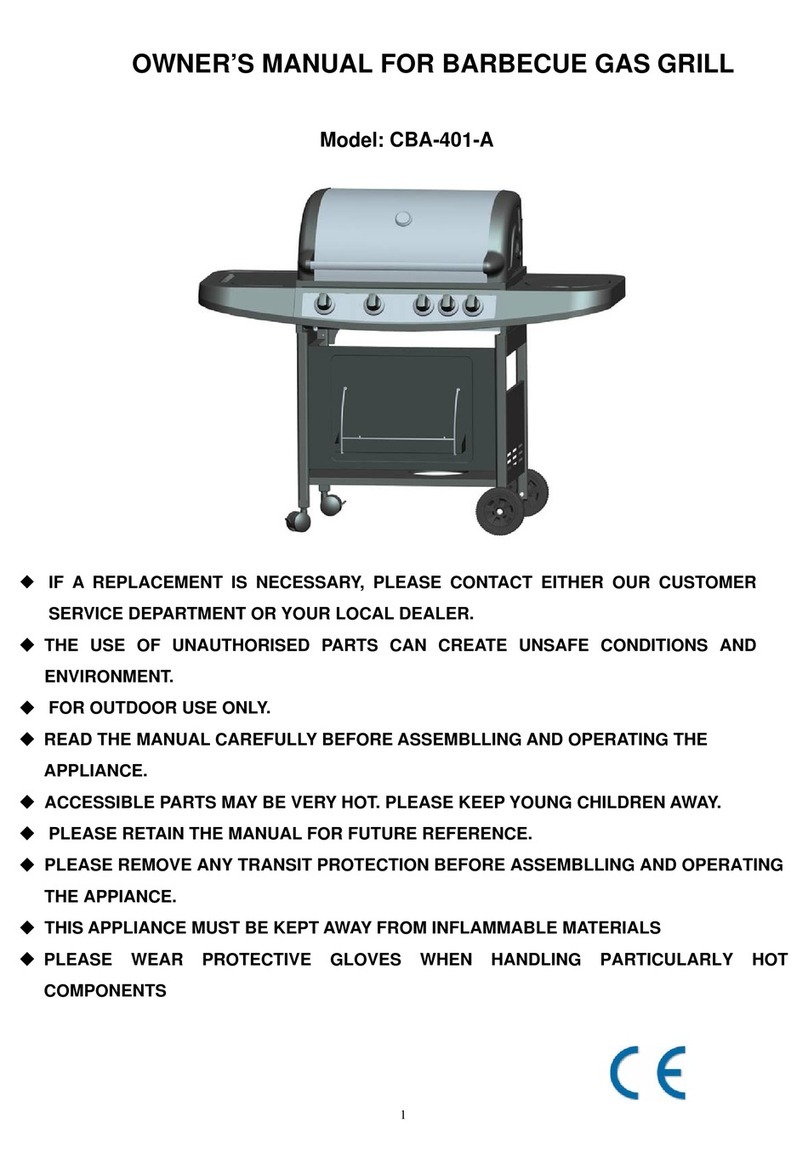
8
1. Never fill the cylinder beyond 80%
full. An overfilled cylinder (liquid
propane LP) tank is hazardous
due to possible propane being
released from the safety relief
valve.
2. Do not store a spare LP cylinder
under or near this barbeque grill or
in an enclosed area.
3. If the information in Steps 1 and 2
are not followed exactly, a fire
causing death or serious injury may
occur.
4. The safety relief valve on the LP
tank could activate, releasing
propane and cause an intense fire
with risk of property damage,
serious injury or death.
5. If you see, smell or hear escaping
gas, immediately get away from the
LP tank and call your fire
department.
6. All spare LP tanks must have safety
caps installed on the tank outlet.
GENERAL INSTALLATION
LP Tank Removal, Transport and Storage
TURN OFF all control knobs and LP tank valve. Turn coupling
nut counter-clockwise by hand only. DO NOT use tools to dis-
connect. Loosen tank screw beneath bottom shelf, then lift LP
tank up and out of cart. Install safety cap onto LP tank valve.
Always use cap and strap supplied with valve. Failure to use
safety cap as directed may result in serious personal injury and/or
property damage.
Adisconnected LP tank in storage or being transported must
have a safety cap installed (as shown). DO NOT storean LP tank
in enclosed spaces such as carport, garage, porch, covered patio
or other building. NEVER leave an LP tank inside a vehicle which
may become overheated by the sun.
DO NOT store an LP tank in an area where children play.
The LP tank used with your grill must meet the following
requirements:
Use LP tanks only with these required measurements:
12” (30.5cm) diameter x 18” (45.7cm) tall
with 20 lb 9 kg.) capacity maximum.
LP tank valve must have:
(1) Type 1 outlet compatible with regulator or grill
(2) Safety relief valve
The LP tank must be constructed and marked in accordance with
the specifications required for LP cylinders.
Place dust cap on cylinder valve outlet whenever the cylinder is
not in use. Only install the type of dust cap on the cylinder valve
outlet that is provided with the cylinder valve. Other types of caps
or plugs may result in leakage of propane.




























